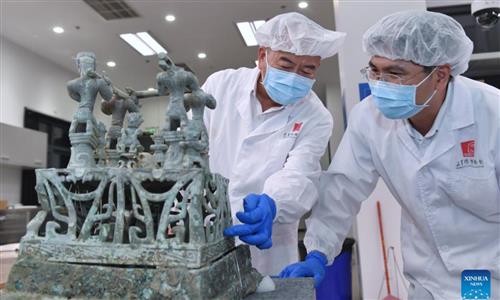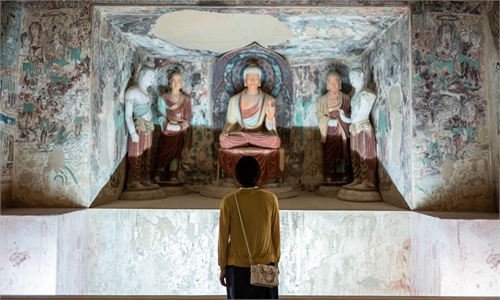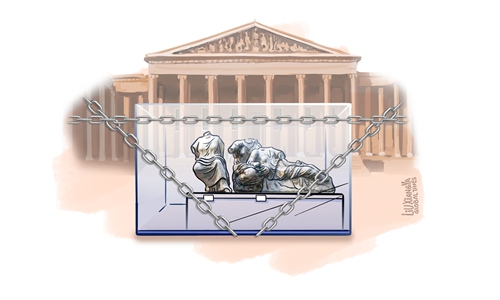ARTS / CULTURE & LEISURE
Digital team in Zhejiang museum recreate clothing from South Song Dynasty
A digital figure named Zhao Boyun, dressed in a glossy gauze robe with a lotus pattern, was recreated by the Zhejiang Provincial Innovation Center of Advanced Textile Technology in Shaoxing, East China's Zhejiang Province. Experts told the Global Times that this is the most complete restoration of South Song Dynasty (960-1127) male attire.
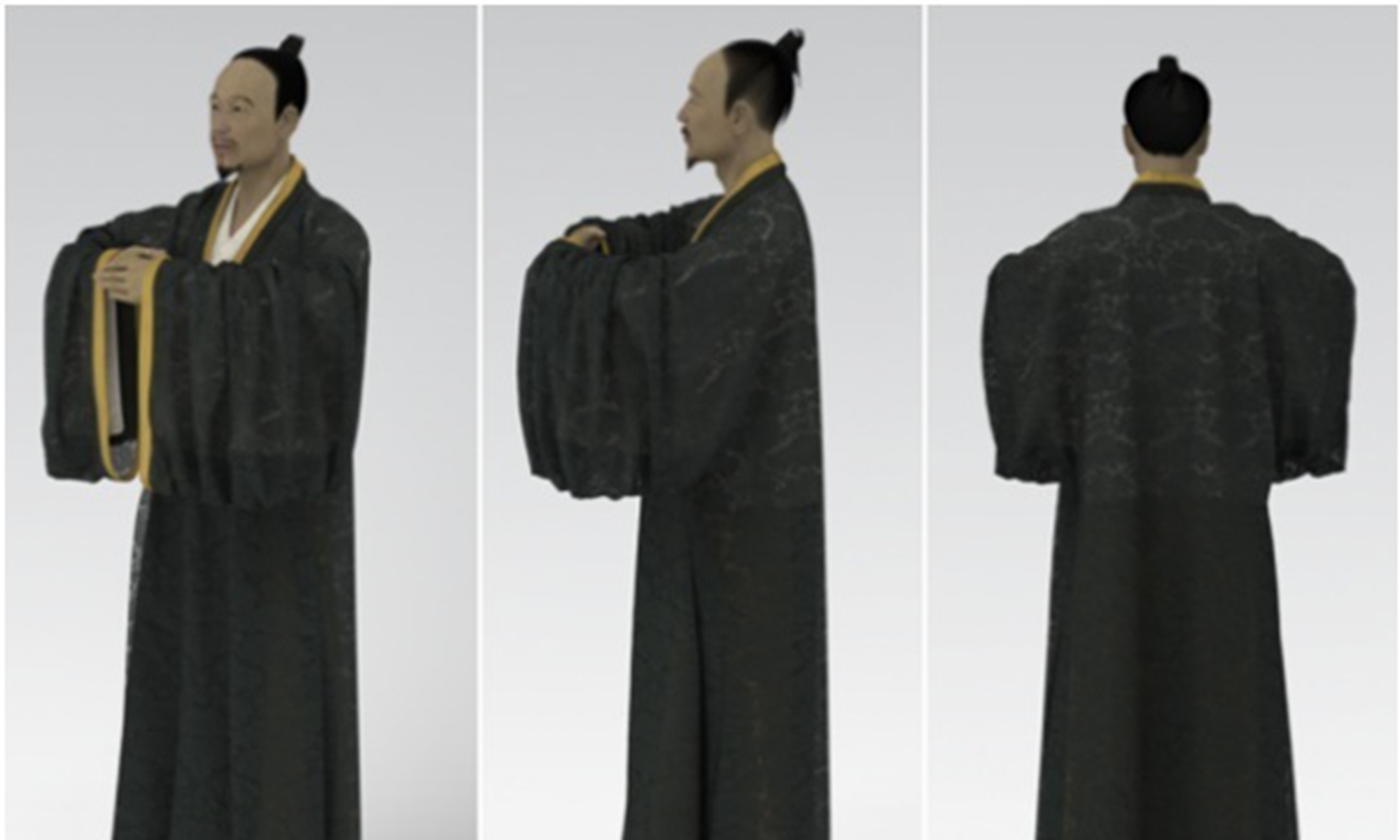
Qian Diqing, a core member of the digital fashion team of the center, told the Global Times on Tuesday, that Zhao's digital figure and attire are inspired by the images discovered in his tomb. This project worked on the materials provided by the Huangyan Museum in Taizhou, Zhejiang.
"This is the most comprehensive and representative male attire restoration. Its [textile] technique is also complete," said Qian, who is also a lecturer at the School of International Education under Zhejiang Sci-Tech University.
Qian's team restored a total of six silk fabric cultural relics that were unearthed from the tomb of Zhao, who used to work on bridge building projects, according to history records. The clothes showcased in the two demos display exquisite weaving craftsmanship, thus experts believe that they belong to the tip-tier clothing from Song Dynasty.
Applying digital media technology and 3D graphic image technology, the team has reimagined clothing patterns, fabric structures, clothing styles and put it on the virtual figure.
The restoration for clothing is more difficult than other ordinary cultural relics, said Qian, adding "Cultural relics such as utensils and curiosities are rigid bodies, with relatively fixed shapes and materials, while fabric is more flexible, and the materials are easily damaged. Their shape is more difficult to maintain."
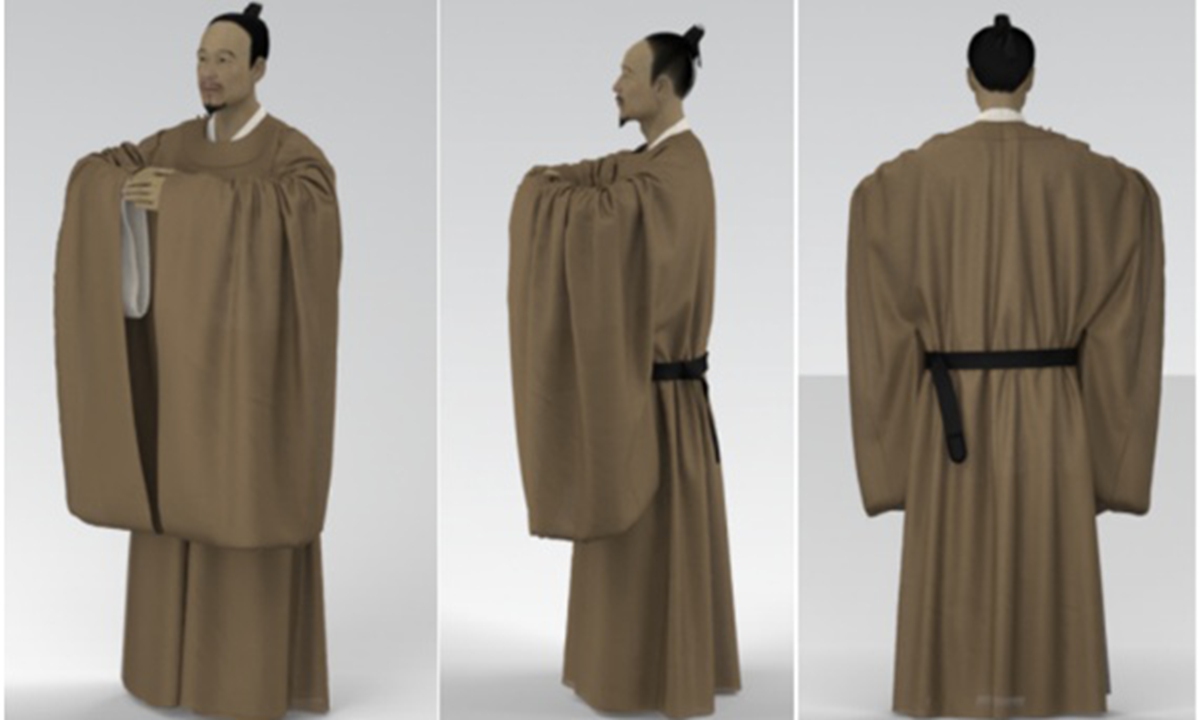
Zhao Anru, an employee with the Huangyan Museum, said that the digital restoration of cultural relics is an important approach to protect cultural relics.
"Museum visitors can appreciate the charm of the cultural relics in an all-round way through 3D simulation and restoration results," said Zhao.
The digital restoration of clothing relics has brought a new wave of creativity to the textile industry, Qi Dongming, a vice director of the center.
"Through new technologies and new business models, the digital restoration for clothing relics is expected to lead the next disruption in the textile sector," Qi said.
Talking about future plan, Qian told the Global Times that the restoration will go further and produce more 3D dynamic presentations, illustrating Zhao's life and work. An online museum focusing on South Song Dynasty could be launched later.
Additionally, the restored textile patter, materials and graphics could be repurposed in many generative designs, Qian said.

Restored cross-collared lotus-patterned glossed gauze robe from South Song Dynasty (960-1127) Photo: Courtesy of the School of International Education under Zhejiang Sci-Tech University
Qian Diqing, a core member of the digital fashion team of the center, told the Global Times on Tuesday, that Zhao's digital figure and attire are inspired by the images discovered in his tomb. This project worked on the materials provided by the Huangyan Museum in Taizhou, Zhejiang.
"This is the most comprehensive and representative male attire restoration. Its [textile] technique is also complete," said Qian, who is also a lecturer at the School of International Education under Zhejiang Sci-Tech University.
Qian's team restored a total of six silk fabric cultural relics that were unearthed from the tomb of Zhao, who used to work on bridge building projects, according to history records. The clothes showcased in the two demos display exquisite weaving craftsmanship, thus experts believe that they belong to the tip-tier clothing from Song Dynasty.
Applying digital media technology and 3D graphic image technology, the team has reimagined clothing patterns, fabric structures, clothing styles and put it on the virtual figure.
The restoration for clothing is more difficult than other ordinary cultural relics, said Qian, adding "Cultural relics such as utensils and curiosities are rigid bodies, with relatively fixed shapes and materials, while fabric is more flexible, and the materials are easily damaged. Their shape is more difficult to maintain."

Digital demo of the round-necked pale silk gauze robe official uniform Photo: Courtesy of the School of International Education under Zhejiang Sci-Tech University
Zhao Anru, an employee with the Huangyan Museum, said that the digital restoration of cultural relics is an important approach to protect cultural relics.
"Museum visitors can appreciate the charm of the cultural relics in an all-round way through 3D simulation and restoration results," said Zhao.
The digital restoration of clothing relics has brought a new wave of creativity to the textile industry, Qi Dongming, a vice director of the center.
"Through new technologies and new business models, the digital restoration for clothing relics is expected to lead the next disruption in the textile sector," Qi said.
Talking about future plan, Qian told the Global Times that the restoration will go further and produce more 3D dynamic presentations, illustrating Zhao's life and work. An online museum focusing on South Song Dynasty could be launched later.
Additionally, the restored textile patter, materials and graphics could be repurposed in many generative designs, Qian said.
